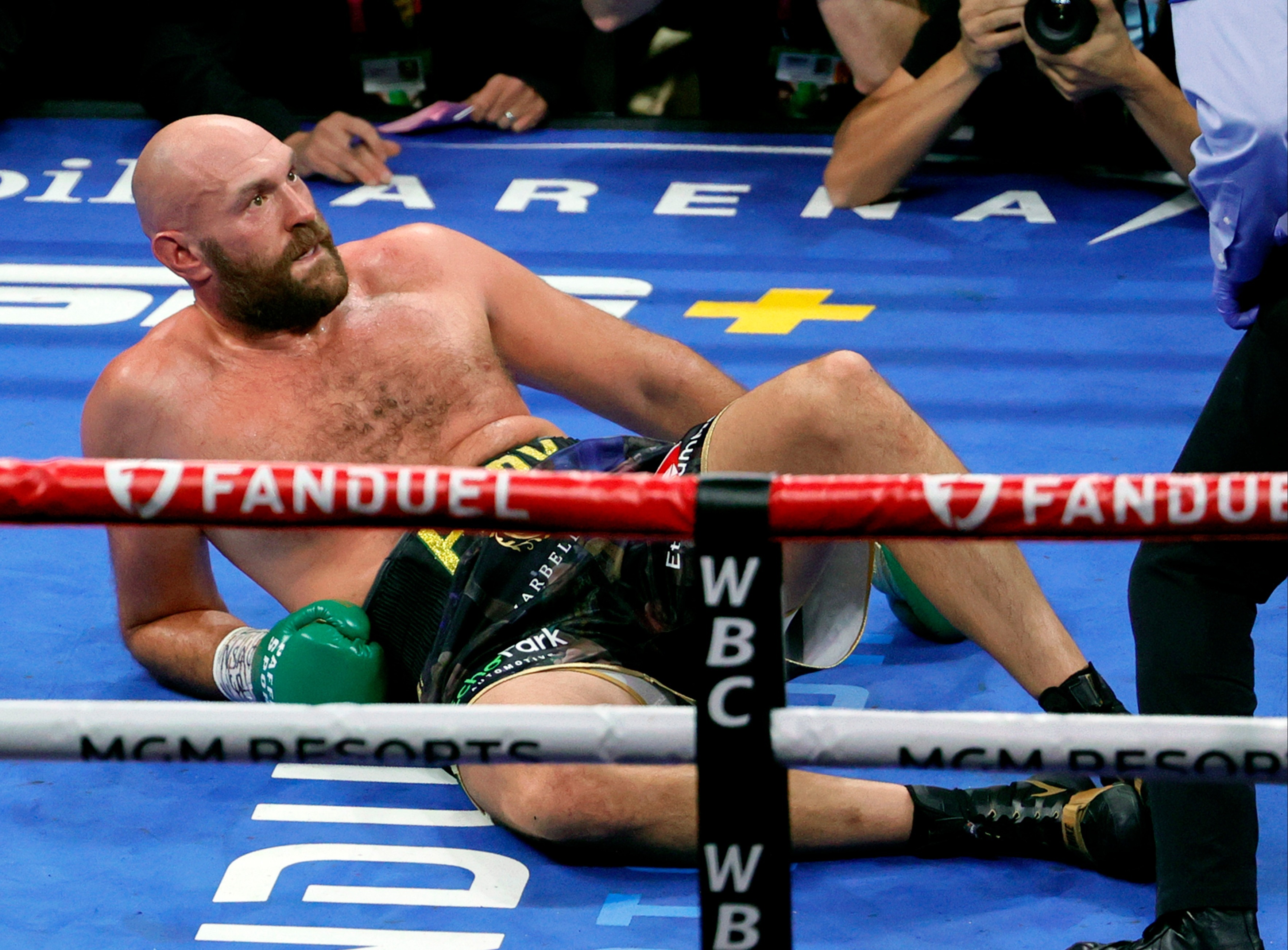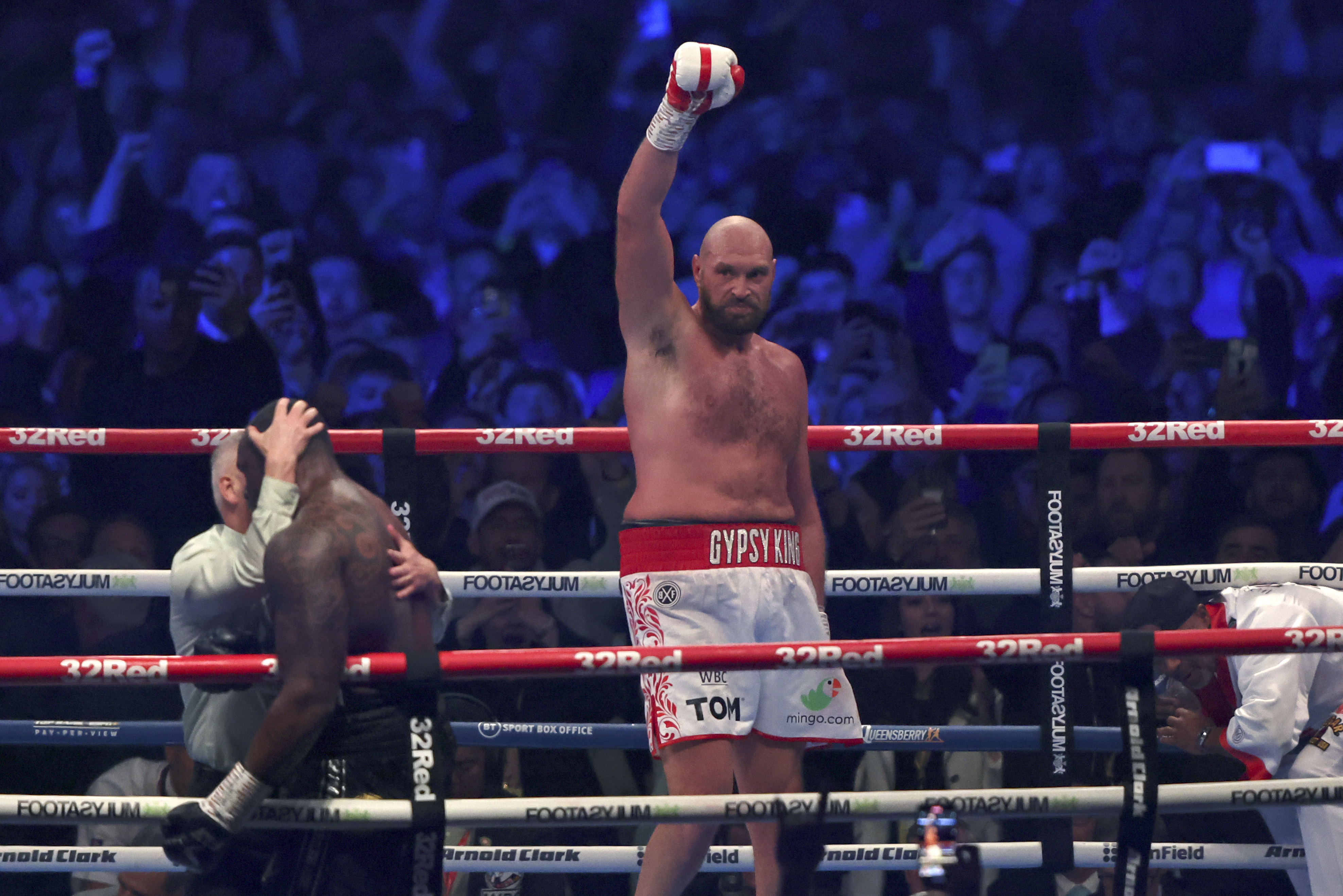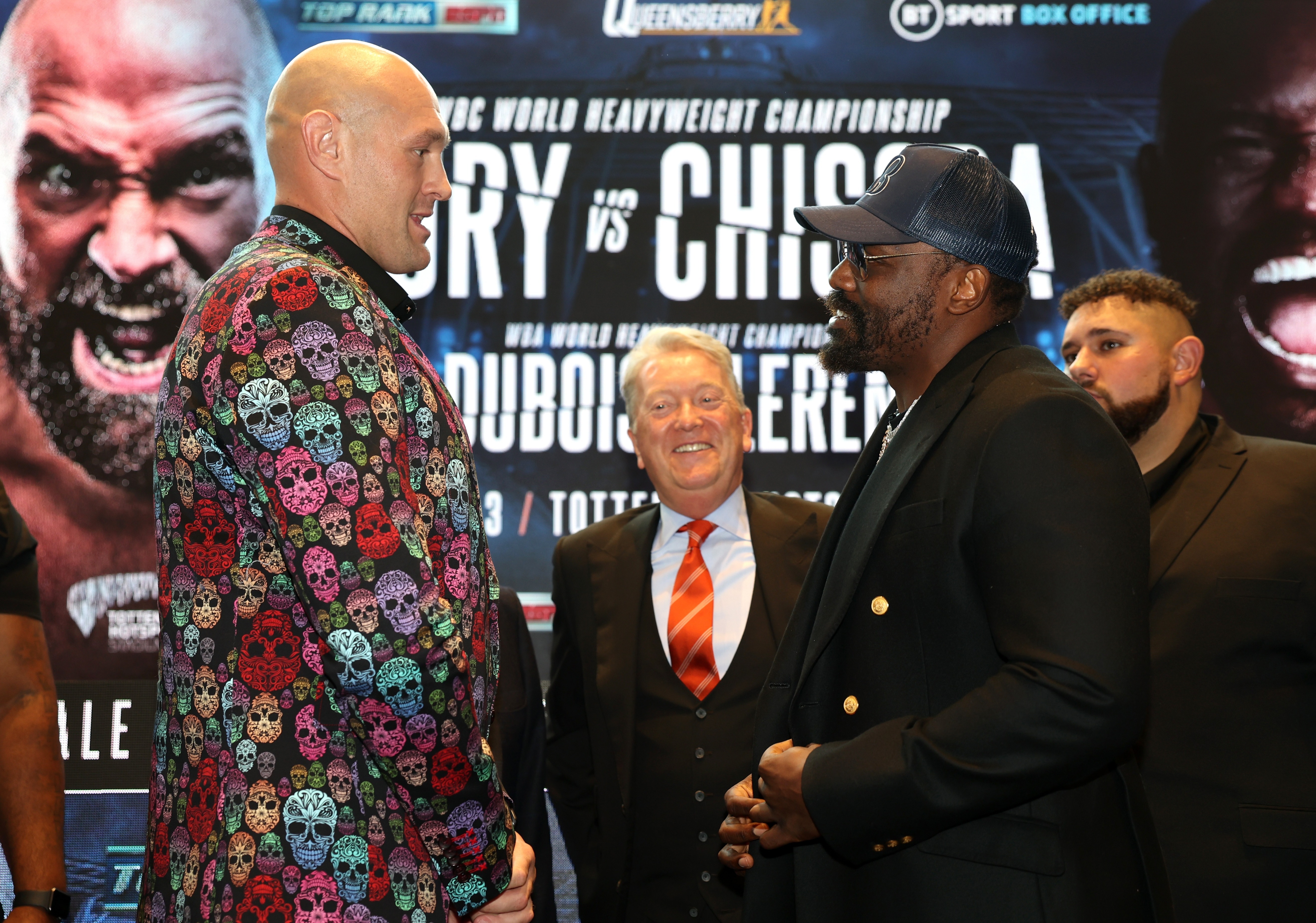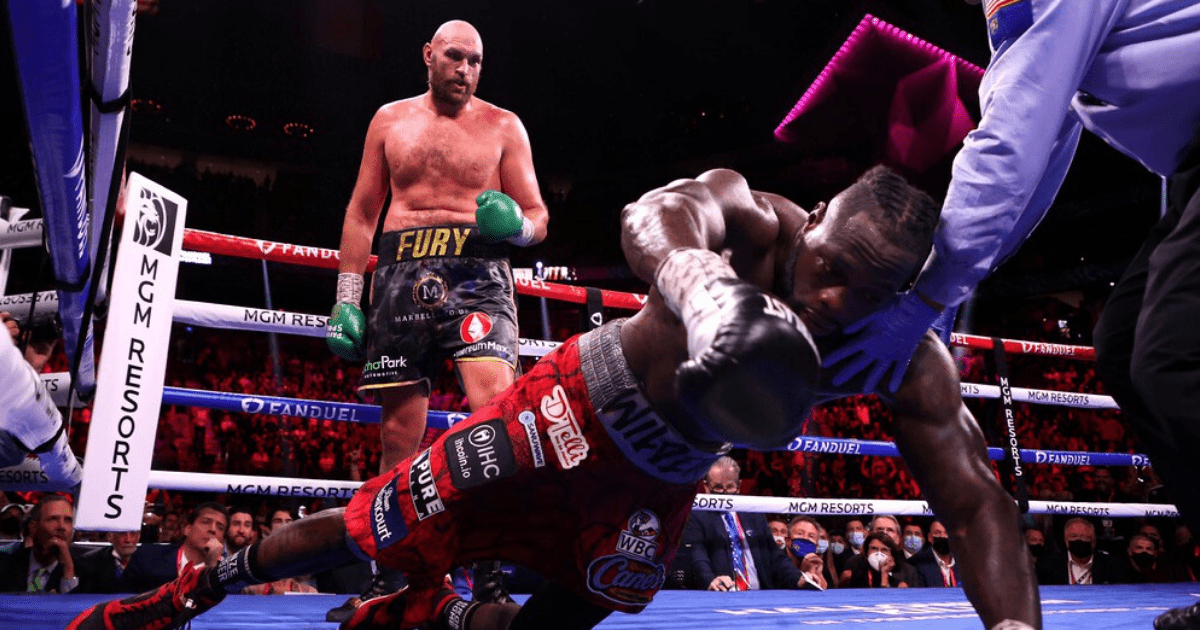TYSON FURY wanted to retire from boxing after forgetting how many times he was sent to the canvas in his trilogy fight with Deontay Wilder.
The Gypsy King closed the book on his epic rivalry with the former WBC heavyweight champion with a brutal 11th-round knockout in their Sin City showdown last October.
Tyson Fury closed the book on his rivalry with Deontay Wilder with a brutal KO last October
The Gypsy King survived two vicious knockdowns to retain his WBC heavyweight title
 Fury didn’t remember how many times he’d been dropped in the aftermath of the fight
Fury didn’t remember how many times he’d been dropped in the aftermath of the fight
But Fury’s first title defence came at a cost as he was dropped twice by the vicious power puncher, knockdowns he couldn’t recall in the immediate aftermath of the fight.
In his new autobiography, the 34-year-old said: “So while getting my face punched in for a living has put millions of pounds in the bank, a fighter needs to know when their time is up and mine is near.
“Walking away from boxing may be the hardest thing I ever do.
“All I know is that I don’t want to overstay my welcome, ruin my legacy, or die from a big right to the side of the head.
“And believe me, an ending like that has felt worryingly real at times.
“I even experienced short-term memory loss following that bruising encounter with Wilder in 2021, when, in the hours after the win, my head covered in tennis ball-sized lumps, it was impossible to remember how many times I’d gone down.
“Everything was foggy, and the experience frightened me.”
The bruising encounter scared Fury stiff and hastened his plans to walk away from the sport.
He continued: “No way do I want to end up living out my days in a wheelchair, or eating my dinners through a straw.
“After that fight with Wilder, I told my promoter Frank Warren that I planned to retire.”
Fury did eventually hang up his gloves after his brutal sixth-round knockout of Dillian Whyte in April, although he’s since performed a U-turn on that decision.
The former unified heavyweight champion will defend his WBC strap against Derek Chisora at the Tottenham Hotspur Stadium on December 3.

Fury hung up his gloves after his brutal knockout of Dillian Whyte in April
 But it proved to be shortlived as he’s gearing up for a trilogy fight with Derek Chisora
But it proved to be shortlived as he’s gearing up for a trilogy fight with Derek Chisora
And the prospect of retirement seems like an afterthought for the Wythenshawe warrior, who recently told talKSPORT: “I ain’t going anywhere.
“I had retirement for four or five months and I didn’t like what I tasted.
“I could fight maybe ten more times.
“I have everything the world has to offer and that to me is not interesting.
“The only thing that really gets me going is boxing, fighting and training.
“There are no goals for me in boxing anymore. I’m doing this because it is the only thing I know.”
Frequently Asked Questions
How long does it take for you to master boxing?
Boxing is one the oldest forms of martial arts. China recorded the first boxing match in 2200 BC. Boxing has existed for thousands upon thousands of generations. Today, boxing is still popular among athletes and celebrities. It takes approximately 10 months to master boxing.
The reason why it takes so long to learn boxing is because it involves many different types of movements. To perform each movement properly, you need specific muscles. It takes time and effort to build these muscles.
After you learn how to move your own body, you can practice any type of boxing. As you get more proficient at each technique, you will be able to improve your skills.
Do you have the ability to train yourself to box?
You can learn to box. Find a local boxing gym and sign up for a class. You will find most gyms offering free classes. However, if there isn’t one near you, you can always search Google for local boxes clubs.
Equipment such as gloves, mouthpieces, headgear and sparring partners are also required. Once you have everything you need, you can practice your kicks and punches.
What are some of the benefits of boxing
There are many health benefits associated with boxing. For starters, boxing helps build strong muscles and bones. It improves your coordination and reflexes. It also strengthens your heart and lungs. The best part is that boxing doesn’t require any special equipment. You can use any item you have at home.
Statistics
- This article received 39 testimonials and 89% of readers who voted found it helpful, earning it our reader-approved status. (wikihow.com)
- It is just like normal sparring with a partner, but you want to throw punches at 75% of your normal speed. (wikihow.com)
External Links
amazon.com
- Amazon.com – Ringside Diablo Wrestling Boxing shoes : Clothing Shoes & Jewelry
- Amazon.com – Sanabul Boxing Wraps Elastic 180in Red — Sports & Outdoors
expertboxing.com
How To
How to box for training
How to box for exercise
Your goal in learning boxing is self-confidence and improvement of your physical fitness. Boxing is one of the most popular sports in the world. It requires speed, agility and strength.
Learning how to box is a great way to get fit and feel good about yourself. You’ll enjoy it so much, you’ll want more.
There are many options for boxing training. Some take place at gyms or health clubs while others require you to train at home. You can also take online courses that allow you access from anywhere in this world.
It is important to find a program that suits your needs and your lifestyle. The best programs will include exercises that help build muscle mass and flexibility, improve cardiovascular endurance, enhance well-being, as well as increase overall wellbeing.
It’s important to decide whether you prefer a beginner-level course or one that is more advanced. Beginner’s classes usually teach basic techniques, such as sparring, mittwork, shadowboxing, and punching. Advanced programs typically offer a wider variety of exercises and cover more complex movements.
Programs for beginners usually last eight weeks and cost less that $100. They don’t offer any advice on nutrition, weight loss or injury prevention.
Advanced programs usually last for six months and are around $300. These programs include nutrition advice and stretching routines. In addition, some programs incorporate resistance training (such as lifting weights) and aerobic conditioning (such as running).

